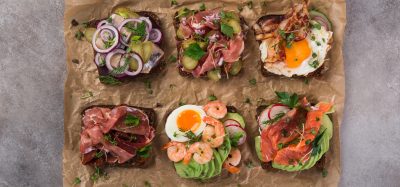Kraft Heinz talks growth and sustainability
- Like
- Digg
- Del
- Tumblr
- VKontakte
- Buffer
- Love This
- Odnoklassniki
- Meneame
- Blogger
- Amazon
- Yahoo Mail
- Gmail
- AOL
- Newsvine
- HackerNews
- Evernote
- MySpace
- Mail.ru
- Viadeo
- Line
- Comments
- Yummly
- SMS
- Viber
- Telegram
- Subscribe
- Skype
- Facebook Messenger
- Kakao
- LiveJournal
- Yammer
- Edgar
- Fintel
- Mix
- Instapaper
- Copy Link
Posted: 18 April 2022 | Cristina Kenz | No comments yet
Cristina Kenz, Chief Growth and Sustainability Officer, on how Kraft Heinz International is addressing growth and sustainability.


In an era in which climate change, population growth, greenhouse gas emissions and inequitable food distribution systems have created a perfect storm of uncertainty, leaders in the global food and agriculture arenas have a responsibility to address growth and sustainability in a holistic fashion.
At Kraft Heinz, our charge is to grow in the right way. For us to continue feeding the world, we must change the way we look at the environment, farm animals and food systems. This means modifying the present broken system of food production and distribution to dramatically reduce agricultural emissions and nourish people rather than the huge number of animals that currently feed us. Consequently, we must invest heavily in plant-based innovation – and at Kraft Heinz, that’s exactly what we’ve done, with more than 90 percent of our current international portfolio comprising plant-based products.
It means we must embrace regenerative farming methods that enrich soil on our journey to achieve carbon neutrality by 2050. As a milestone on our path to achieving Net Zero emissions, we are already stepping up our agenda to target a near-term emissions reduction of 50 percent by 2030.
Nothing about this commitment to change is new to Kraft Heinz; our most beloved brands are built on a solid foundation of respecting the soil and growing food responsibly in order to ensure people’s health as well as our food’s quality. What is changing are the tools at our disposal, particularly in the digital arena. The Kitchen, our internal social media agency, is an excellent example; with teams ranging across geographies, the Kitchen unites data, insights, technology and content.
At its core, The Kitchen is a vehicle for learning about consumer interests, opportunities and issues – whether it’s taste trends, demands for more health‑conscious products, or changes in consumption patterns – and to translate these learnings into business-building initiatives. For example, our team in China recently leveraged insights about the pandemic-based increase in home cooking to target consumers with personalised digital content, including recipes created with TikTok influencers.
The beauty of the Kitchen concept is the agility and speed with which we leverage our digital insights. Our responses are in real time, and with so many cultural moments happening on social media at any given time, we are deliberate in selecting those that make the most sense for our brands.
In other parts of our business, we’re leveraging data derived from our years of experience working closely with agronomists to improve food production and distribution systems while responding to specific consumer demands. Consider the tomato: with the increasing demand for local food cultivation and distribution, we are implementing strategies to grow more tomatoes in the regions that our tomato-based products are consumed. For example, two-thirds of tomatoes grown today in Egypt are unusable. To improve crop quality and reduce waste in this region, we have begun collaborating with local growers and government agencies to introduce practices that increased yields by 40 percent in Spain.
Then there is the humble bean. Our data confirms that consumers across the world are increasingly recognising the value of beans, and we’re playing a leading role in ensuring a bountiful and delicious supply. Beans are truly a superfood: beyond their countless varieties and taste profiles, beans actually give back to the environment, restoring nitrogen to the soil for the benefit of subsequent crops, and we are committed to maximising their potential.
Our obsession with data gathering is proving hugely beneficial in ‘attacking’ the scourge of malnourishment, a global issue with wildly different local implications ranging from obesity to undernourishment. Globally, this facilitates our work towards our commitment to deliver 1.5 billion meals to people in need by 2025.
Ultimately, our digital and data-supported efforts ranging from monitoring to content creation and the rigorous application of historical learnings and ongoing R&D will help us to achieve our vision of sustainably growing by delighting more consumers globally.
Related topics
Food Safety, Food Waste, Ingredients, Processing, Quality analysis & quality control (QA/QC), Sustainability









